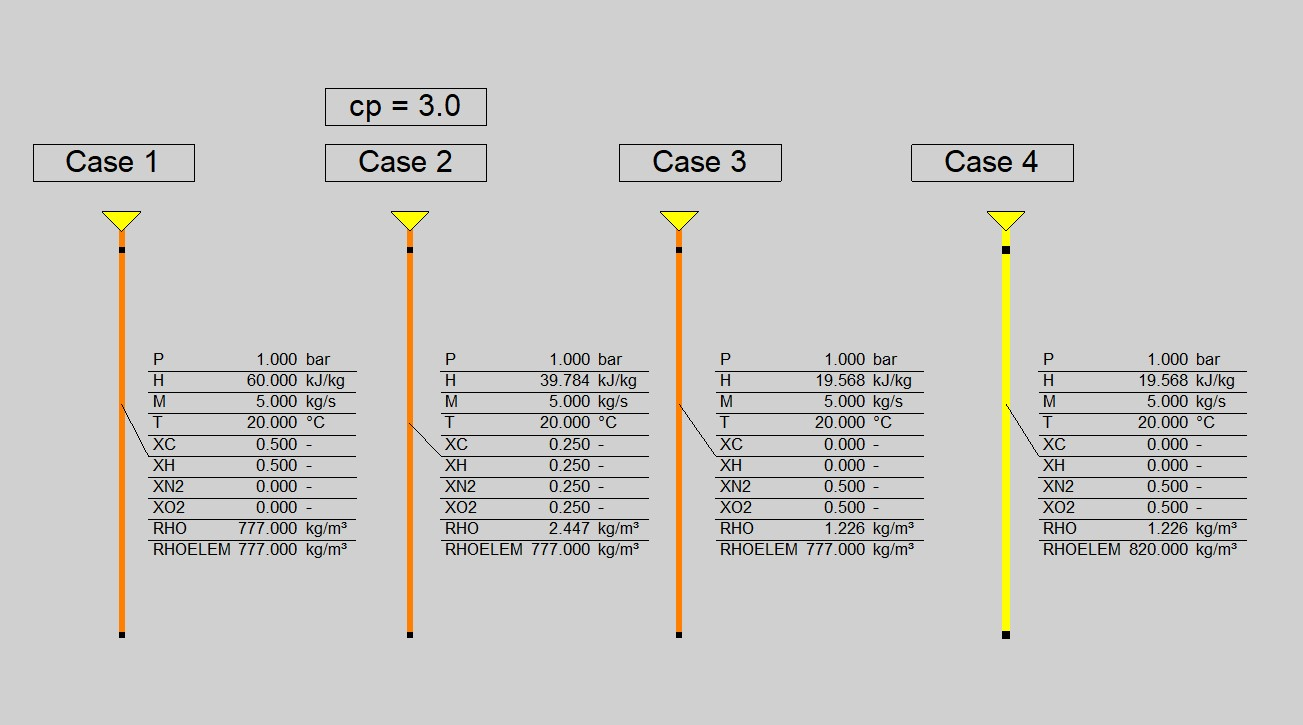

For materials that are not available in any EBSILON®Professional material table, it is possible to define a single-phase fluid yourself via cp-polynomials. If you know these polynomial coefficients for your fluid, you can use this fluid in EBSILON®Professional by defining the coefficients 0 to 3 or a0 to a3 resp. in Ebsilon.
The fluid can be used for combustion together with combustion chambers and reactors.
cp is specified as a polynomial of third grade: cp = a0 + a1 * T + a2 * T2 + a3 * T3
Note that "T" is accepted as a measured value "°C".
This cp polynomial applies only to that portion of the fluid, that is defined by an elementary analysis (C, H, O, N, S, Cl).
If you other substances to your fluid, these substances will be calculated as usual with the specific FDBR-cp-polynomials.
Hint: The stream type "Thermo Liquid" also allows to specify cp coefficients as well as coefficients for other properties like density, heat conductivity, viscosity...
However, it is not possible to specify a chemical composition for the "Thermo Liquid". Therefore, it cannot be used for combustion calculations.

Example:

In each case, the fluid is defined with a constant cp of 3 (a0 = 3.0, a1 = a2 = a3 = 0). This pressure is set to 1 bar and the temperature to 20 °C. The value crosses show the enthalpy calculated for each case.
Case 1: Pure usage of the specified polynomial. An elementary analysis is specified (50% C, 50% H). In this case, only the specified cp polynomial is used. The elementary analysis does not affect the thermodynamic calculation (but it would, if you used this fluid for a combustion calculation).
Case 2: Mixed usage. The fluid consists of a portion with the given elementary analysis (C, H) and of a gas portion (N2, O2). This results in a mixed calculation: for the gas portions, the standard behaviour is assumed, while for the portion with the specified elementary analysis the given cp polynomial is used.
Case 3: No usage of the cp polynomial. Here, your fluid consists of gases (N2, O2) only, and it is calculated exactly as gas (case 4). Your polynomial is not used at all in this case.
Case 4: Stream type "Air" with 50% N2 and 50% O2. The behaviour is the same as case 3.